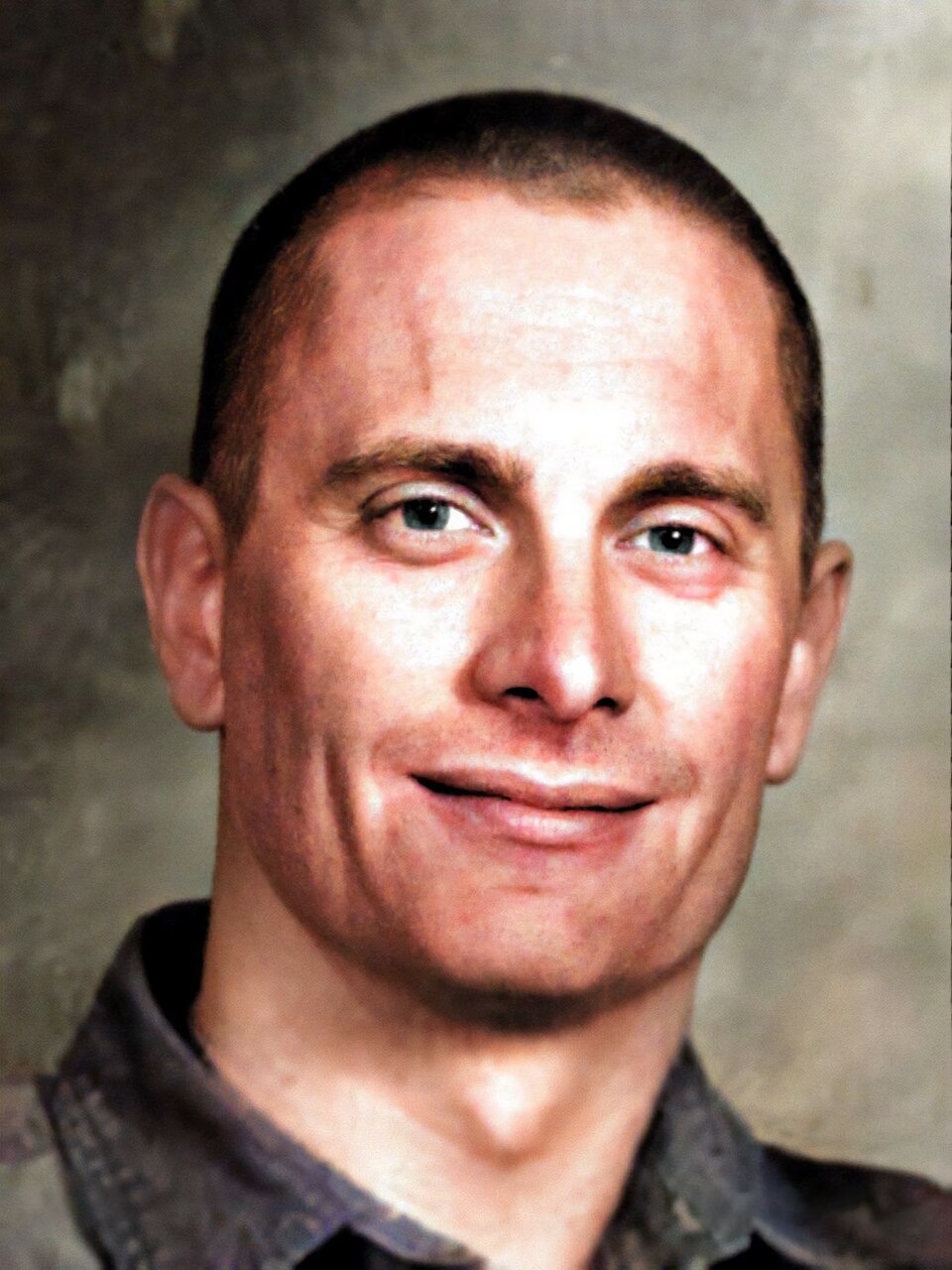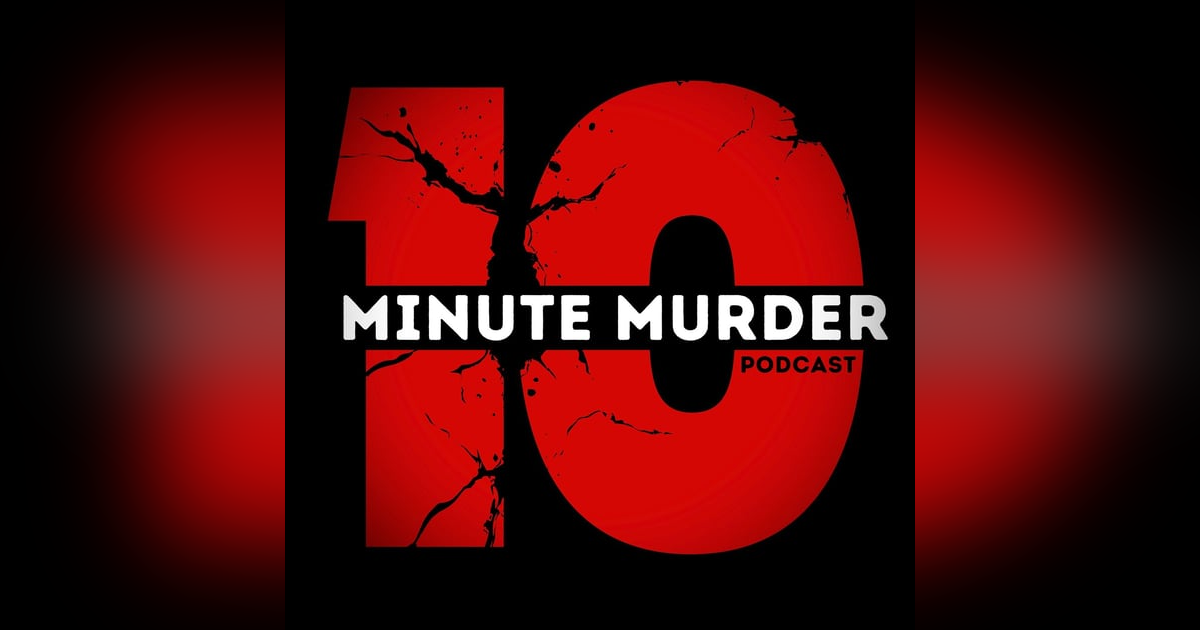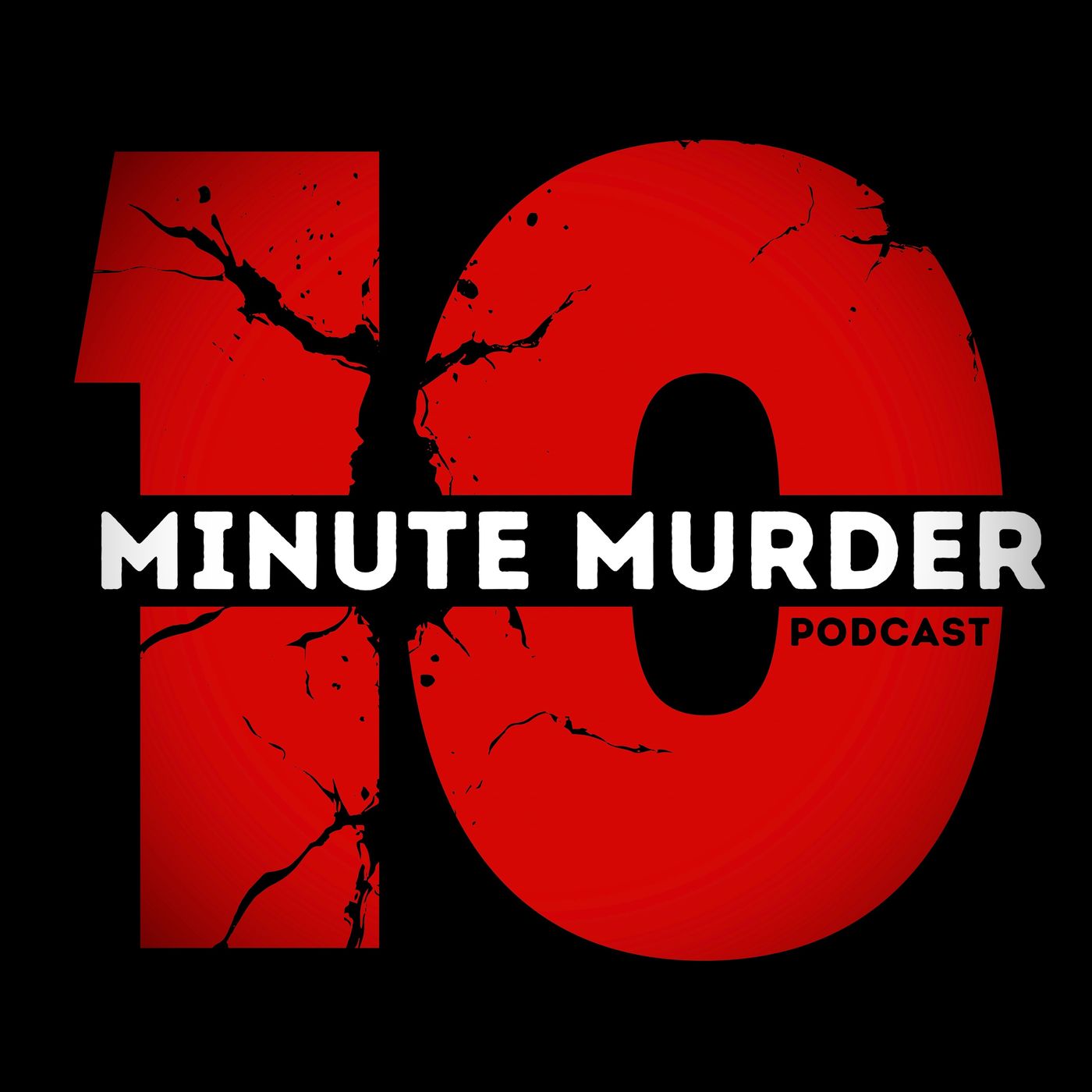The Scottsdale Explosion: How Robert Fisher Murdered His Family and Disappeared

When a firefighter who saves lives becomes the one taking them, when a father who promises protection becomes the greatest threat his children will ever face, you get Robert Fisher. A man so terrified of losing his family that he chose to destroy them instead. This is what happens when trauma turns toxic and control becomes catastrophic.
The Robert Fisher Case: When Fear Becomes Fatal
The Making of a Monster: Robert Fisher's Early Years
Born in 1961 to Jan Howell and William Fisher in New York, Robert William Fisher started life like millions of other American kids. The family relocated to Arizona when Robert was young, and by most accounts, his early childhood looked pretty standard. Three kids, two parents, suburban life in the Southwest. Nothing that would make you think you were looking at a future family annihilator.
Trauma has a way of reshaping people from the inside out, and when Robert turned 15 in 1976, his parents divorced. Divorce was becoming more common in the 1970s, but for Robert, watching his family fall apart became the defining moment of his entire existence. He processed this event differently than most kids would. This became his blueprint for terror, the thing that would haunt every relationship he ever had.
From Navy Dreams to Civilian Reality
Robert graduated high school in 1979 and immediately enlisted in the Navy, serving aboard the USS Belleau Wood. Here's where his story takes its first major turn toward disappointment. Robert had bigger ambitions than regular Navy service. He wanted to become a Navy SEAL, the elite of the elite.
In 1982, his SEAL application was rejected. This rejection hit Robert hard, adding another layer to his growing collection of perceived failures and humiliations. He left the Navy that same year and transitioned to civilian life, eventually finding work as a firefighter in San Diego County. At least in this career, he could be the hero, the one who saves people from disaster.
Marriage and the Illusion of Control
By 1987, Robert had met Mary Cooper, a deeply religious woman who valued family above everything else. Mary came from a close-knit, faith-centered background, and she saw marriage as a sacred commitment. The couple married and settled in Scottsdale, Arizona, close to Mary's family. This proximity to her support system would later prove both a blessing and a curse.
Robert and Mary went on to have two children: Bobby and Britney. From the outside, they looked like the perfect American family. Robert was active in their church community, appeared to be a devoted husband and father, and maintained steady employment. Neighbors saw a man who seemed to have his life together.
The reality behind closed doors told a completely different story.
The Dark Side of Domestic Life
Mary's family would later reveal the truth about their marriage. Robert had transformed Mary into what they described as a "yes sir" wife. He controlled every aspect of her life, treating his wife and children like possessions rather than people he loved. This need for absolute control stemmed directly from his childhood trauma. Having watched his parents' marriage crumble, Robert became obsessed with preventing the same fate for his own family, even if it meant destroying the very people he claimed to love.
Mary's father would later say, "We never knew a thing. She didn't want mommy and daddy to know anything she was going through. She took care of those two precious kids." Mary had become an expert at hiding the abuse, protecting both her children and her family from the knowledge of what was really happening in her home.
Mary's devotion to motherhood was absolute. Her children were her world, and she did everything in her power to shield them from their father's increasingly erratic behavior. She was living for Bobby and Britney, trying to maintain some semblance of normalcy in a household ruled by fear and control.
The Unraveling Begins
By 1998, seven years after Bobby was born, cracks began appearing in Robert's carefully constructed facade. He started missing church services regularly, leaving Mary to explain his absence to their religious community. Around this time, according to reports, Robert contracted a urinary tract infection after cheating on Mary with a prostitute. He desperately tried to hide both the infection and its cause from his wife, terrified that the truth would expose his hypocrisy and threaten his control over the family.
Despite treating Mary horribly, Robert remained adamant about one thing: his marriage would never end in divorce. He would rather die than repeat his parents' mistake. The couple attempted marriage counseling with their church pastor, but the sessions failed to resolve their fundamental problems. Neighbors frequently heard them arguing about money and intimacy, their voices carrying through the walls of their Scottsdale home.
The Point of No Return
Robert's behavior became increasingly disturbing as the new millennium approached. Friends noticed significant changes in his personality during hunting trips, which had always been his primary outlet for stress. On one particularly memorable expedition, Robert killed an elk and celebrated by smearing its blood across his face. This macabre ritual shocked his hunting companions, who had never seen him behave so bizarrely.
During another hunting trip, Robert crept up behind a family and fired his gun into the air repeatedly, terrorizing them for his own amusement. His hunting buddies later reported that Robert had begun expressing deep anxiety about losing his family. He would tell anyone who would listen that he "could not live without his family," a statement that would prove prophetic in the most horrific way possible.
By 2001, Mary had reached her breaking point. She confided in friends that she wanted to end her marriage for the sake of her children. Whether she communicated this decision directly to Robert remains unclear, but given his possessive nature and his stated fears about losing his family, he likely sensed that his control was slipping away.
The Day Everything Changed
April 9th, 2001 started like any other Monday in the Fisher household. Robert left for his job as a respiratory therapist at the Mayo Clinic, but he departed earlier than usual. His behavior throughout the day would later be scrutinized for clues about his state of mind and his plans for that evening.
Robert picked up his daughter Britney from school around 3:30 PM to attend a ceremony where she was scheduled to receive an academic award. However, he rushed her out of the event before she could actually receive her recognition. This detail would later strike investigators as significant. Why would a father who allegedly loved his daughter deny her this moment of achievement?
That evening, neighbors heard Robert and Mary arguing with unprecedented intensity. Their voices carried through the neighborhood for hours, escalating into screaming matches that continued until around 10:00 PM. Then, suddenly, the Fisher house fell completely silent.
The Murders
What happened next represents one of the most calculated and brutal family annihilations in American criminal history. Robert William Fisher systematically murdered his entire family, starting with his wife.
Mary died first. Robert slashed her throat and then shot her execution-style to ensure she was dead. The combination of methods suggests this was personal, an act of rage and control rather than a crime of passion.
After killing Mary, Robert crept into the bedrooms where his children were sleeping. He slit Bobby and Britney's throats from ear to ear, ending their lives while they slept. The children never had a chance to defend themselves or even understand what was happening.
Once he confirmed that his family was dead, Robert began implementing his escape plan. He doused the house in gasoline, then cut the home's natural gas line. He lit a single candle, creating a delayed ignition device that would give him hours to disappear. Before leaving, he took his dog Blue, a two-year-old Queensland Heeler, and drove away in Mary's car.
The Explosion That Shook Scottsdale
For ten hours, natural gas filled the Fisher home while Robert put distance between himself and the crime scene. At 8:42 AM on April 10th, 2001, the gas reached the candle flame. The resulting explosion was so powerful that it shook the entire neighborhood like an earthquake.
Firefighters arrived quickly, working desperately to prevent the blaze from spreading to neighboring homes. When they finally gained access to the structure, they discovered the charred remains of Mary, Bobby, and Britney Fisher. Robert had hoped the fire would destroy all evidence of the murders, making the deaths appear accidental.
His plan might have worked if he had been more careful about covering his tracks. However, investigators quickly began piecing together the events of the previous evening. CCTV footage showed Robert at a nearby gas station, withdrawing $280 from an ATM while driving Mary's Toyota 4Runner.
The Hunt Begins
Four days after the explosion, Robert William Fisher was named as the only person of interest in the three homicides. The FBI launched a massive manhunt, and tips began pouring in from across the country. Robert had what investigators described as an "everyman" face, making positive identification extremely difficult. He was your average-looking middle-aged American man, the type of person who could blend into any crowd.
The last confirmed evidence in the case surfaced ten days after the explosion. Searchers found Mary's Toyota 4Runner abandoned in the Tonto National Forest, about 100 miles northeast of Scottsdale. Even more disturbing, they discovered Blue, Robert's Queensland Heeler, in dire condition under the vehicle. The dog was severely dehydrated, malnourished, and highly agitated. Rescuers had to sedate him before they could safely remove him from his hiding spot.
The discovery of the dog raised more questions than it answered. Why would Robert abandon his beloved pet? Had something happened to Robert in the wilderness, or had he planned this abandonment as part of his escape strategy? Investigators found human feces in the area, suggesting Robert had spent at least some time there, but no other physical evidence emerged.
False Leads and Dead Ends
On June 29th, 2002, Robert Fisher was added to the FBI's Ten Most Wanted list, with a reward of $100,000 offered for information leading to his arrest. Over the following years, hundreds of tips and alleged sightings were reported, but none led to his capture.
The most promising lead came in February 2004, when Canadian authorities arrested a man who bore a striking resemblance to Robert Fisher. The unidentified man had the same facial scarring and missing teeth as Fisher, leading investigators to believe they had finally caught their fugitive. However, fingerprint analysis conclusively proved that this was not Robert Fisher, and the man was released.
In April 2016, the FBI released age-progressed images showing what Robert might look like after 15 years on the run. These images generated renewed interest in the case but failed to produce any credible leads.
Recent Developments and New Questions
In 2021, Robert Fisher was removed from the FBI's Ten Most Wanted list after nearly 20 years. The bureau stated that he "no longer fit the criteria" for inclusion, though they assured the public that the investigation would continue. Recent podcast investigations have raised questions about the timeline and Robert's possible survival in the wilderness.
A 2024 podcast series examining the case has revealed potential discrepancies in the official timeline and raised questions about witness statements that were never fully investigated. These new findings suggest that some aspects of Robert's escape may have been misunderstood or overlooked during the initial investigation.
Theories About Robert Fisher's Fate
The question of whether Robert Fisher is alive or dead has consumed amateur detectives and law enforcement professionals for over two decades. Several theories have emerged, each with its own merits and weaknesses.
The first theory suggests that Robert successfully escaped to another country and has been living under a new identity. Proponents of this theory point to his military training, survival skills, and the head start he gained through his elaborate escape plan. However, the limited amount of cash he withdrew and his lack of sophisticated resources make this scenario less likely.
The second theory proposes that Robert has been living off the grid in remote wilderness areas, using his hunting and outdoor skills to survive. Given his extensive knowledge of Arizona's backcountry and his experience as an outdoorsman, this theory has some credibility. The vast, rugged terrain of the American Southwest could potentially hide someone determined to remain invisible.
The third theory, which I find most plausible, is that Robert died by suicide shortly after abandoning his dog in the Tonto National Forest. People often argue that narcissistic personalities don't commit suicide, but this reasoning has been proven wrong numerous times. The comparison to Brian Laundrie, who killed himself after murdering Gabby Petito, shows that even controlling, abusive individuals can choose suicide when faced with the consequences of their actions.
Robert's decision to kill his family stemmed from his terror of losing them through divorce. Once he had committed these murders, he may have realized that he had destroyed the very thing he was trying to preserve. The psychological weight of his actions, combined with the certainty of life imprisonment or execution if caught, might have driven him to end his own life in the wilderness.
The Legacy of Tragedy
Regardless of where Robert Fisher is today, his actions on that April night in 2001 destroyed far more than three lives. Mary's family lost a daughter, sister, and beloved mother. Bobby and Britney Fisher had their entire futures stolen from them. The Scottsdale community was shaken by the realization that such evil could exist behind the facade of suburban normalcy.
Robert William Fisher represents the ultimate perversion of family values. His claim that he could not live without his family led him to ensure that his family could not live at all. His fear of divorce drove him to commit acts far worse than any marital dissolution could ever be.
The case remains officially open, and the FBI continues to accept tips about Robert Fisher's whereabouts. Whether he is hiding somewhere in the world or died in the Arizona wilderness over two decades ago, one thing remains certain: Robert Fisher deserves to face justice for the brutal murders of Mary, Bobby, and Britney Fisher.
Their memory deserves that much. And frankly, so do we all.











